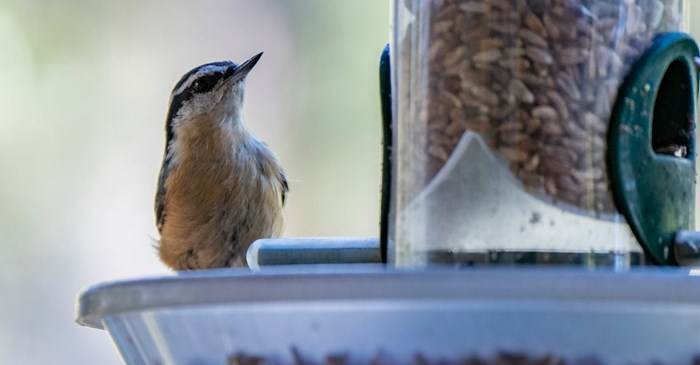What’s to love about safflower seeds? These small, thin-hulled seeds are rich in the good fats and protein that birds need to maintain their energy.
When it comes to deterring squirrels and “bully birds,” such as grackles and starlings, safflower seeds may be your secret weapon, because these birds don’t care for their bitter taste.
The good news is that plenty of colorful songbirds that love sunflower seeds also get excited about safflower seeds. Whether you serve them straight, or go with a mix, here are just a few colorful birds that show up for safflower seeds.
Red-bellied Woodpecker
In the early spring, before the insects start coming to life, woodpeckers are frequent feeder visitors as they search for sources of high-protein bites. When one of these fabulous birds lands, it’s quite the event. As the weather warms, you’ll find them hopping up and around tree trunks and branches on the hunt for their meals.
White-breasted Nuthatch
Like the woodpecker, early spring is your last chance to catch an up-close look at the nuthatches as they fly in for an energy break. By summer, these agile little birds will take to the trees, hopping with astonishing ease and dexterity up and around the vertical surfaces, craning their necks in their search for insects.
Steller's Jay
Those who live west of the Rocky Mountains delight at the antics of these forest-dwelling jays with smoky-black crested heads and sapphire blue bodies. If you’re out for a picnic, you may spy one or two of these birds lurking in hopes of a handout. In the fall, they’ll make frequent back-and-forth trips from the feeder, which is a sure sign that they’re loading up their winter cache.
Northern Cardinal
In the spring months, these red beauties sing lovely, warbling songs that sound like "Cheer! Cheer! Cheer!" most often from the top of the highest tree. Before the leaves emerge, look way up and you’ll see them perched there. These year-round birds don’t migrate, so as long as your feeders are filled, they’ll be one of your constant visitors.
Indigo Bunting
Not as widely known as other colorful birds, these “blue canaries” with the gorgeous melody are widespread from the Atlantic coast to the foot of the Rockies. If you live near an opening near the woods, with plenty of low vegetation, keep your eyes peeled for a flash of blue.
Black-capped Chickadee
If you’re setting out safflower seeds, many species may hesitate as they size up the situation. Safflower plants grow best in arid climates, so many songbirds won’t be familiar with them. Not the chickadee. They’ll boldly come in for a test tasting almost right away.
Lyric Golden Safflower has more nutrition and less waste than bargain brands featuring white safflower. Fill your feeder and enjoy the colorful visitors that flock in year round.
